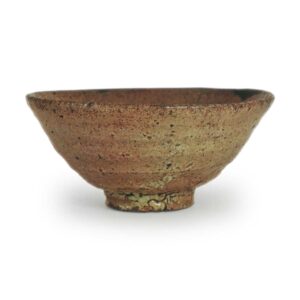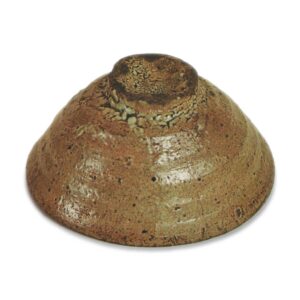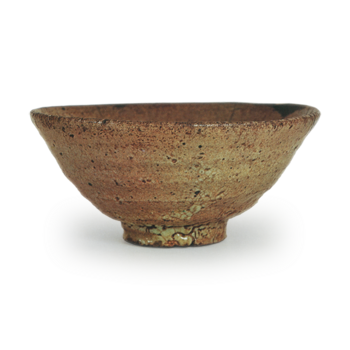

Held in the Matsunaga Memorial Museum
Height: 6.0 – 6.4 cm
Diameter: 13.5 – 13.7 cm
Base diameter: 4.7 – 4.9 cm
Height: 1.1 cm
According to Toda Rogen’s “Gogaku-shu”.
Seo Seonite Koboku (same work as Yamanoi, called Seo, owned by me, Kokon, owned by Matsuoka of Kashi, sold by him to Mitsui, and again changed to Seo at the request of the previous owner, Seo)
, and it is said that the name “Seo” was taken from the name of the previous owner. Rogen changed the name to Kokon, but when it came into the possession of Mitsui Matsuhiro of the Mitsui family, it was renamed Seo again.
In the Taisho era, it was praised as one of the three famous Aoido bowls in the eastern capital, along with Takeya and Kasugano.
Rogen considers this Seo to be the same work as Yamanoi, and indeed the slightly more restrained style is similar to Yamanoi. However, the spread of the wheel is not as undulating as Yamanoi, and it has a more gentle form.
The rim is relatively shallow, and it rises in five stages with the wheel marks running around it, but the fullness and roundness of the waist is similar to that of Yamanoi.
The overall bluish-green-tinged loquat-colored glaze is quite thick, and the white glaze running down the waist creates a tranquil scene. The kaaragi (flower-patterned) design on the inside and outside of the foot ring is tinged with light blue and is truly beautiful, and is the main attraction of this tea bowl. There are four eye marks on the inside, and the glaze pool and cracks in the glaze add to the beauty of the inside.
Overall, this is a gentle and honest tea bowl with a sense of mass and power, but it lacks a sense of dynamism. However, rather than being lacking, it might be said that this is a tea bowl that quietly conceals such things within.
When compiling the Taisho Meiki Kan, Mitsui Matsuhiro apparently rejected it for inclusion, and although it was considered to be one of the three best bowls in the capital at the time, it was not included in the Meiki Kan. Therefore, this is the first time that it has been introduced to the public in this way, along with the Yamanoi, and in that sense it can be said to be a response to the requests of tea bowl enthusiasts.
After the war, it became the property of Matsunaga Ji-an, and was moved to the Matsunaga Memorial Museum when it was established.



